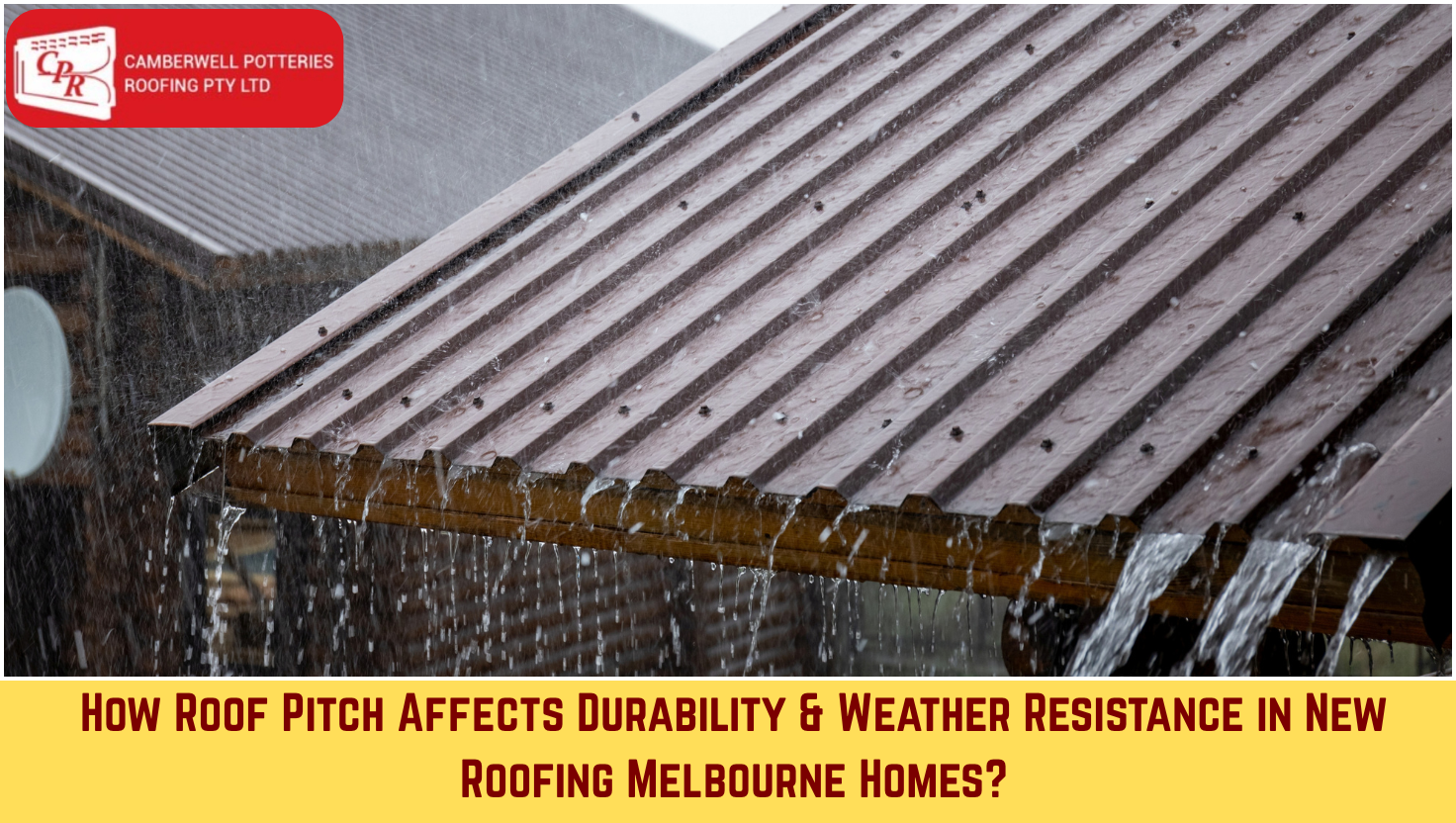How Roof Pitch Affects Durability & Weather Resistance in New Roofing Melbourne Homes?
As a Melbourne roofing professional, we’ve noticed that roof pitch is often overlooked during the planning stages of roofing projects.
Yet it’s one of the most crucial factors affecting how well your roof performs over time – especially here in Melbourne, where our weather can throw just about everything at your home.
So, in today’s blog, we’ll explain what roof pitch is and why you should consider it during your new roofing Melbourne project.
What’s Roof Pitch Anyway?
So what do we mean by “pitch”? It’s just how steep your roof is. Roofers measure it as a ratio – how much the roof goes up compared to how much it runs across. A roof that increases/rises 4 inches for every 12 inches across has what we call a “4:12 pitch.”
We’ve been doing new roofing Melbourne projects for years now, and it always surprises us how many homeowners never think about pitching. But honestly? It makes a HUGE difference to how long your roof lasts. Most people just don’t know this stuff until there’s a problem.
“A roof protects not just the structure beneath it, but the lives within it.”
Why Pitch Matters for New Roofing Melbourne Homes?
Melbourne’s climate is notoriously unpredictable – we get everything from scorching summer heat to driving winter rains, sometimes all in the same week! This weather variability makes proper roof pitch especially important.
When assessing homes for re roofing Melbourne, we’ve repeatedly seen how inadequate pitch leads to three main problems:
- Water Pooling: Water should flow off your roof quickly. On low-pitched roofs, water moves more slowly and has more opportunities to find vulnerabilities in your roofing materials. After heavy rainfall, you’ll observe water sitting on low-pitched roofs for hours – that’s asking for trouble.
- Wind-Driven Rain: During those fierce Melbourne storms, rain doesn’t always fall straight down. Wind can drive rain horizontally and even upward under tiles on low-pitched roofs. Many emergency call-outs for new roof installation happen because the previous roof’s pitch couldn’t handle our local weather patterns.
- Debris Accumulation: Leaves, twigs, and dirt slide off steeper roofs more easily. On flatter roofs, this debris builds up, trapping moisture against tiles and accelerating wear. We’ve seen 20-year-old steep roofs in better condition than 10-year-old low-pitched ones purely because of this self-cleaning action.
Different Tiles, Different Pitch Requirements
Not all roofing tiles or materials are created equal when it comes to pitch requirements. Based on our experience with re roofing services across Melbourne, here’s what different materials typically need:
Concrete Tiles: Generally require a minimum pitch of 18-20 degrees. We’ve noticed these perform adequately at lower pitches than clay options, making them popular for modern home designs with flatter roofs.
Terracotta/Clay Tiles: These usually need at least a 22-degree pitch to perform reliably. They’re beautiful and durable but absolutely need proper pitch to prevent water ingress.
When discussing new roofing installation with clients, we always emphasise these minimums because going below them often voids manufacturer warranties. No matter how good the installation, the wrong pitch will lead to problems down the track.
The Hidden Benefits of Proper Pitch in New Roofing Melbourne Projects
While water resistance is the most obvious benefit of appropriate roof pitch, there are several other advantages we’ve observed while working as part of the reroofing contractors community:
- Improved Ventilation: Steep roofs provide more space in the attic, which means better ventilation through your roof cavity. That will aid in home temperature control and stop humidity accumulation that may cause mould or mildew infestation.
- Extended Material Lifespan: Simply put, new roofing Melbourne materials last longer when they’re not constantly damp. Proper pitch keeps your tiles drier, significantly extending their useful life. I’ve inspected 30-year-old properly pitched roofs that still had years of life left in them.
- Energy Efficiency: Better roof ventilation from a proper pitch can reduce cooling costs during Melbourne’s hot summers. The difference in attic temperature between well-pitched and poorly-pitched roofs can be as much as 10-15 degrees on hot days.
How to Find the Right Balance for Your Home?
While steeper pitches offer better performance, there’s no one-size-fits-all answer. When planning new roofing in Melbourne, you need to balance:
- Architectural Style: Different home styles traditionally have different roof pitches. Drastically changing your pitch might look out of place in your neighborhood.
- Material Compatibility: Your chosen roofing material has specific pitch requirements that need to be respected.
- Local Weather Exposure: Some areas of Melbourne experience more severe weather than others. Coastal homes or those in exposed locations might benefit from steeper pitches.
- Budget Considerations: Increasing pitch sometimes requires significant structural changes during re-roofing, which impacts cost.
As experienced reroofing contractors, we assess all these factors before making recommendations.
Sometimes, small pitch adjustments can be made during re roofing Melbourne homes without major structural changes, dramatically improving performance.
Real-World Performance Differences
The impact of proper pitch becomes most apparent during extreme weather events. After major storms, the pattern is clear: steeper roofs generally suffer fewer issues.
During the significant storms we experienced last winter, our emergency call-outs showed a clear trend. Approximately 70% of leak calls came from homes with pitches below recommended minimums for their particular tile types. This isn’t coincidental – it’s physics in action.
What’s particularly frustrating is seeing relatively new roofs fail simply because the pitch wasn’t properly considered during new roof installation. A properly pitched roof might cost slightly more initially, but the long-term savings in avoided repairs and extended roof life make it a wise investment.
Making an Informed Decision
If you’re considering new roofing installation or re roofing services, make pitch a central part of your discussion with contractors. Ask specific questions like:
- Is my current pitch adequate for my chosen materials?
- Would a slight increase in pitch significantly improve performance?
- How does my roof’s pitch compare to manufacturer recommendations?
Good reroofing contractors will welcome these questions and provide clear explanations without resorting to unnecessary technical jargon.
Final Thoughts
Roof pitch isn’t the most exciting topic. Most folks care more about tile colours or materials. But trust us- pitch makes a huge difference to how long your roof lasts, especially in Melbourne where the weather can be so unpredictable.
I’ve seen too many roofs fail early just because the pitch wasn’t right.
When you’re investing in a new roofing Melbourne project, don’t just focus on what looks nice. Think about what works best for our local conditions.
That’s why at Camberwell Roofing, we take time to explain these things. Whether you need full re-roofing or new roof installation, we’ll look at your specific situation and help you make choices that won’t lead to problems down the road.
A good roof should just work without you having to think about it much. And getting the pitch right is a big part of making that happen.


